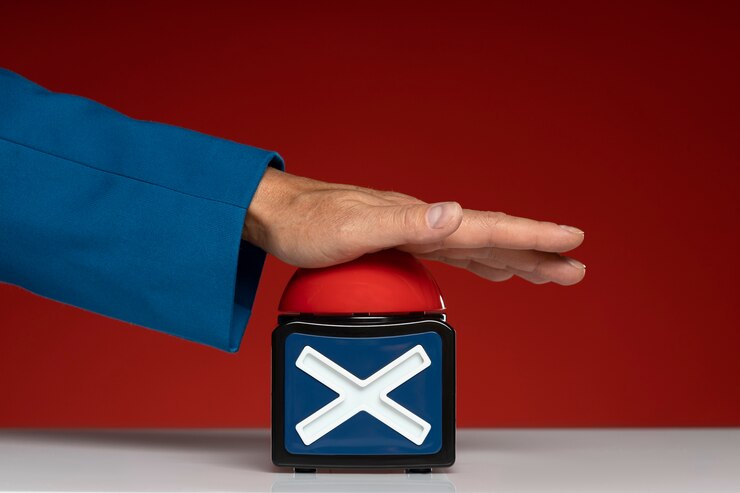Acupuncture Billing Guidelines of 2025: CPT Codes & Tips
Acupuncture Billing Guidelines for 2025: Everything You Need to Know for Maximum Reimbursement
Healthcare providers in the field of radiology face a unique set of challenges when it comes to billing. Unlike other medical specialties, radiology billing involves complex coding systems, numerous payer requirements, and frequent changes in regulations.
With the complex rules and ever-evolving CPT codes, getting paid for your services can feel like navigating a maze. But with the right knowledge, you can streamline your billing process, reduce claim denials, and maximize your reimbursements.
What Is Acupuncture Billing? Why It Matters
Acupuncture billing is the process of submitting claims to insurance providers and ensuring proper reimbursement for services rendered. It’s more than just entering treatment details into a form—it involves using the right CPT codes, knowing what each insurance provider requires, and maintaining proper documentation to support the medical necessity of treatments.
Without a profound knowledge of these processes, practitioners have the potential to be underpaid or experience delays and even full claim denials that could greatly affect their cash flow. It is very important to stay current with the appropriate billing procedures as healthcare regulations continuously change.
What Are Acupuncture Billing CPT Codes?
You need to use correct 2025 CPT codes to provide billing that describes the service you are giving. Time-based, with codes specific to the type of treatment and whether electrical stimulation is included (this example applies to acupuncture).
- 97810 – Acupuncture, initial 15 minutes, without electrical stimulation.
- 97811 – Acupuncture, each additional 15 minutes, without electrical stimulation (used with re-insertion of needles).
- 97813 – Acupuncture, initial 15 minutes, with electrical stimulation.
- 97814 – Acupuncture, each additional 15 minutes, with electrical stimulation (used with re-insertion of needles).
It is important to remember that these codes are time-based, so you have to keep a close count of all the time spent in the session. Billing incorrectly (ie, overlapping time codes or not noting 15-minute units) Interference of the Claims, which we know only through reading about it in a textbook.
Evaluation and Management (E/M) Codes for Acupuncture
Evaluation and Management (E/M) codes are also a crucial aspect when it comes to billing for office visits in addition to acupuncture-specific codes. All of these codes are dependent on the complexity level for the visit and if this is a new or established patient.
- 99201-99205 – Codes for new patient office visits, with increasing levels of complexity and time spent with the patient.
- 99211-99215 – Codes for established patients used for follow-up visits or ongoing treatments.
Correctly identifying whether a patient is new or established is crucial to using these codes properly, as errors can result in claim denials or audits.
Medicare Guidelines for Acupuncture Billing
In 2020, Medicare began covering acupuncture services for patients with chronic lower back pain. While this was a significant step forward for acupuncture practitioners, there are specific requirements that must be followed to ensure coverage. Here’s what you need to know:
- Medicare covers up to 12 sessions within a 90-day period for patients with chronic lower back pain (defined as lasting more than three months).
- If the patient shows improvement, up to 8 additional sessions may be covered, but the maximum yearly total is 20 sessions.
- Only the following CPT codes are covered: 97810, 97811, 97813, and 97814.
Additionally, acupuncture providers need to ensure that they have proper documentation of the patient’s progress and the medical necessity of continuing treatment beyond the initial 12 sessions.
Effective Acupuncture Billing Tips
If you want to submit timely payments and no claim denial, then adopting these best practices would be ideal for Acupuncture Billing:
Medical Necessity: Keep in mind that it is crucial for you to have documentation backing up the requirement of acupuncture treatment, especially while dealing with Medicare or private insurance.setRequestHeader, Which includes information from medical experts detailing the patient’s status, treatment plans, and recovery over time.
Keep abreast of CPT codes— because they undergo annual revisions, it is imperative to be aware of them so that you are not using obsolete ones that may cause claims breaches.
Acupuncture Billing Software:Billing software for acupuncturists will do all of that code, apply it automatically, and manage the claim on your behalf.
Diagnose the Correct ICD-10 Codes for Acupuncture Billing
It is equally important what ICD-10 diagnosis code you put with your CPT. These codes indicate the cause of the treatment and are required to justify reimbursement by insurance companies. Common ICD-10 codes for acupuncture billing include the following:
M54. 5 – Chronic low back pain (which may, in some cases, be required for Medicare claims).
M79. 6 – For muscle pains, myalgia.
M62.40 – Muscle spasms.
Mistakes in Acupuncture Billing
However, even the most experienced acupuncture practitioners can make billing errors that cause payment delays and denials. Below are some of the common billing errors and how to prevent them:
Improper Utilization of Time-Based CPT Codes:
Understanding that acupuncture billing codes are based on the time spent with your patient, it is essential to keep track of the correct timing of treatments. Frequent errors include double-billing codes (but without the extra 15 minutes), resulting in denial claims.
Remember always to record session time so that you are billing the appropriate code combination (97810 for 1st 15 minutes, and then use add-on code(s) such as 97811 for each additional increment of a half-hour).
Lack of Medical Necessity Documentation:
Insurance companies, especially Medicare, require thorough documentation proving that acupuncture treatments are medically necessary. Failing to properly document the patient’s condition and the reasoning behind the treatment can result in denials. Always include detailed notes about the patient’s symptoms, progress, and why acupuncture is necessary.
Not checking insurance coverage:
Some insurance plans may refuse to pay for acupuncture, or they have rules that are more restrictive. Without verification, providers are forced to choose between risking a surprise denial of coverage or saddling the patient with out-of-pocket costs. Before ever starting the patient on a treatment plan, always call your insurance to make sure they cover what you provide.
Not Submitting Prior Authorizations:
Some insurance providers require prior authorization for acupuncture treatments. Failing to submit this authorization before the treatment starts can result in denial of the entire claim. It’s important to understand which providers require prior authorizations and make sure they are in place before treating the patient.
Insurance Provider Guidelines for Acupuncture Billing
Understanding the billing requirements of different insurance providers can make a big difference in how smoothly your claims are processed. Each provider may have specific guidelines that govern what services they cover and how claims should be submitted.
Medicare:Medicare will cover acupuncture for chronic lower back pain, but only for a certain number of sessions. Documentation is critical in establishing treatment continuity after the first 12 sessions.
Private Insurance Providers: Some private insurance companies include acupuncture as a treatment option for a broader range of conditions, among them migraines, sciatica, and arthritis. Sometimes, they limit the number of sessions allowed or require specific documentation for each claim. prior to starting treatment, make sure to ask your patient about their coverage.
Medicaid: Medicaid coverage for acupuncture varies by state. Some states cover acupuncture treatments under certain circumstances, such as for pain management or addiction treatment. Be sure to check the state-specific Medicaid guidelines for acupuncture billing.
Workers’ Compensation and Personal Injury Claims: Acupuncture can sometimes be covered under workers’ compensation or personal injury claims. In these cases, it’s essential to follow the guidelines set by the specific program or claim, which may include detailed reporting on the treatment’s effectiveness and progress over time.
Acupuncture Billing Software: Making It Better and Easier
Perhaps the best way to handle acupuncture billing is to build systems that specifically address healthcare practice and use them throughout. Acupuncture billing software can facilitate the process by doing away with a lot of the legwork involved in the administration, such as:
- Make sure to use the appropriate CPT codes depending on the duration of treatment and the services rendered.
- Tracking session times and automatically applying the appropriate billing codes.
- Submitting claims electronically, reducing paperwork, and speeding up reimbursements.
- Managed patient records and kept all treatment documentation in one place to comply with insurance and Medicare requirements.
Software solutions also help reduce the risk of human error and missed billing opportunities, ensuring your practice gets paid for every service you provide.
Best Practices for Enhancing Payment for Acupuncture Services
To boost the chances of having insurance companies pay benefits promptly and in full, the following recommendations should be observed:
Educate Your Employees: Every team member involved in the billing process, from the front desk crew to the billing staff, should be educated on the proper use of CPT codes and the needed documentation and procedures for the billing of insurance. Continuous education minimizes chances for mistakes that are often the reason for payment denials, timing differences, or the payment of less than what is due.
Know When New Codes Come Into Effect: The mailing addresses and the purpose of each set of codes are subject to change, as well as the rules that govern billing for insurance coverage. Therefore, it is advisable to ensure that one reads publications or goes to workshops and seminars to learn more about the current address codes and billing policies applicable to acupuncture.
Use the Telephone or Write Letters: Never be afraid to pick up the phone or write a letter to an insurance company if there is a question regarding benefits, payments, or any other aspect of billing. This can be beneficial in the long run as the claims payments will be easier and faster to process once the client-provider relations have been established with the insurance company.
Perform Billing Audits on a Regular Basis: Perform regular billing audits to verify that appropriate coding is used and improper claim denials and underpayments do not occur. This will, in turn, assist in preventing losses for the practice that are as a result of errors.
Conclusion
By staying informed about the latest CPT codes, understanding insurance provider guidelines, and following best practices for documentation and coding, you can ensure a smoother billing process with fewer denials and faster reimbursements. Whether you manage billing in-house or use specialized acupuncture billing software, following these guidelines will help you stay on track and ensure your practice’s financial success.
Table of Contents
- Radiology Medical Billing Guide for Medical Practices
- Guidelines for Radiology Medical Billing
- What Are Commonly Used CPT Codes for Radiology Billing?
- Additional Radiology Medical Billing Codes
- What Challenges Are Faced By Radiologists in Radiology Medical Billing?
- What Makes Radiology Billing Difficult?
- Why Outsource Radiology Medical Billing?
- Closing Note





